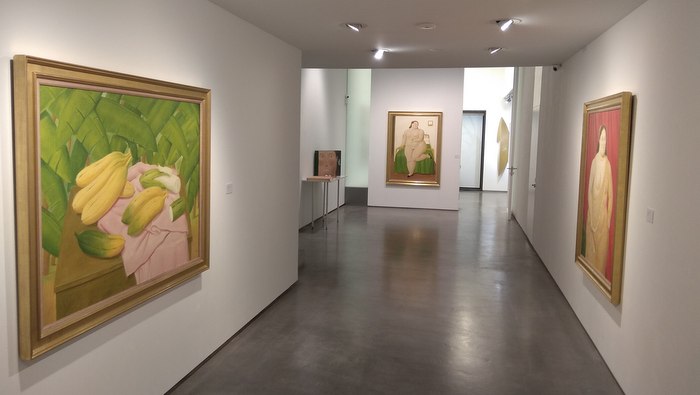"Art has no power to move anything. Art has power over time, of remembrance and testimony. "
"The pleasure of painting is pleasure for itself."
Fernando Botero
Although it seems unprecedented, it is the first time that the work of the Colombian painter, sculptor and draftsman Fernando Botero (Medellín, 1932) is presented in Barcelona, specifically in the Marlborough gallery that opened its doors in 2006, adding to the other six venues that the gallery London has in the world. For this reason, the monographic exhibition Recent Paintings is a milestone for the Barcelona public, considering that in its artistic beginnings it was already in the city. It was in 1952, on the occasion of having won an award in Bogotá, although he was also in Madrid at that time. In addition, his sculptural work is very well represented in the city, where two enormous works related to the animal world cohabit: a cat and a horse. The cat, is currently located in the old neighborhood of El Raval, although previously had been in other parts of the city, as a kind of pilgrimage, but finally seems to have been found the ideal location. As for The Horse, it has always remained in the same place, in terminal 2 of the El Prat airport, which also serves as a meeting point.
Botero is considered one of the best Latin American artists internationally. In more than six decades dedicated to the world of art, his work is recognized throughout the world, since its unmistakable style makes it easily identifiable at first sight. The sinuous forms, filled, enlarged, robust, thick and sometimes deformed, are perfectly recognizable and, in spite of the fact that the human beings and animals that appear in their paintings and sculptures have exaggeratedly rounded volumes, to the eyes of the spectator the existence is observed in a very unique way of humor and sarcastic criticism, regardless of the grotesque images shown by their disproportionate characters, whether they are anonymous or famous, in which they see an ugliness that even makes them be nice.
In a recent interview with the newspaper La Vanguardia in Barcelona, the journalist Ima Sanchís asked him what beauty meant to him and Botero replied that "it is a balance, a tranquility, a coherence, where nothing is left over or nothing is missing and this produces peace " The concept of ugliness in the art world has its derivations, since painters like Lucien Freud, who used to show naked men and women, in many cases of advanced age, the ugliness of their bodies and faces produce in the spectator a sensation of affection and tenderness. Also the Catalan painter and illustrator Elisabeth Sabala, seeks the beauty of the human body in the privacy of each of its characters, instead of physical attractiveness. Whether one case or another, the important thing is that the viewer is fascinated by what the artist can convey through their works. For that reason, his style is called boterismo. Although Botero is identified as self-taught, he frequented various workshops and academies, both in his country and outside, as for example in Madrid -the Academy of San Fernando- and Florence -Academia de San Marcos-.
His first individual exhibition took place in Medellín, at 16 years old. Then, when he moves to Bogotá, he exhibits his paintings in the Leo Matiz gallery, which helps him to make his work known to the Colombian public. At age 26 he teaches at the School of Fine Arts of the National University of the Colombian capital, as a professor of painting. In 1956 he traveled to Mexico and then to New York, a city where he lived until the mid-70s, and then settle permanently in the small Italian town of Petrasanta, which, along with Monte Carlo, will be his favorite places to create his works. Botero points out that his favorite artists are the Italian painters Paolo Ucello, Giotto, Masaccio and Piero della Francesca, the Mexican muralist Diego Rivera and the naïf painter Theodore Rousseau. In the historical center of Bogotá there is a museum dedicated to the artist from La Coruña. It was inaugurated in 2000, with the artist donating 208 pieces, of which 123 are his and the rest of international artists: Dalí, Picasso, Miró, etc.
Although Botero's pictorial work is more prized than the sculptural one, the public usually knows more about the latter. Possibly it is due to the voluptuous sculptures of enormous dimensions in bronze, marble or cast resin found in many cities, including some Spanish ones. Apart from those previously mentioned, in Madrid there is La mujer con espejo, located in Plaza de Colón and La mano, in Paseo de la Castellana. In A Coruña, you can find El romano, located at the entrance of the Casa del Hombre, and in the Plaza de la Escandalera in Oviedo, you can see La maternidad. In any case, outdoor exhibitions are even more attractive, such as in 1992 when he exhibited his bronzes on the Champs-Élysées in Paris, or a year later on Fifth Avenue in New York and in Buenos Aires. In 1994 his spectacular sculptures were moved to the Paseo de Recoletos in Madrid, between the Plaza de Colón and the La Cibeles fountain, and which I was fortunate to be able to contemplate directly.
The exhibition of Barcelona could be seen at the beginning of the year at the Marlborough gallery in Madrid, a city that did not show his work since 1994. Only 8 oil paintings are exhibited, although most of them are large, belonging to the period 2017- 2018, which perfectly reflects Botero's personal universe through different themes: the landscape, the female nude, the portrait, the traditional scenes, the bullfighting, the still life, the historical, political and current references, the musicians and the dancers. In Eva, a naked woman is seen lying on a pink towel on the green lawn, and behind her there are some trees. The contrast between the whitish body of the woman with the green background, denotes his interest in flat colors and light. There is another work with the same theme; it is Bedroom, in which the nudity of the female character is only broken by her black high-heeled shoes, and in one of her hands she holds a nibbled apple, while in the other she holds on to the bar of the bed. Bullfighting is also present in the Matador y Picador pieces. Everyday life appears in a scene of any city or town, as in The street, even if it is exaggerated, since we see four passers-a woman with a child facing, a man in a suit across the street and a woman on her back who carries an umbrella. Everything happens in an instant and in a small space, especially because of the robustness of the characters, since they occupy most of the picture. The flat and bright colors are also the protagonists of the composition, since "the artist uses a systematic method in his painting by eliminating textures and any brushstroke appearance to give color homogeneity and through it, light to his paintings "
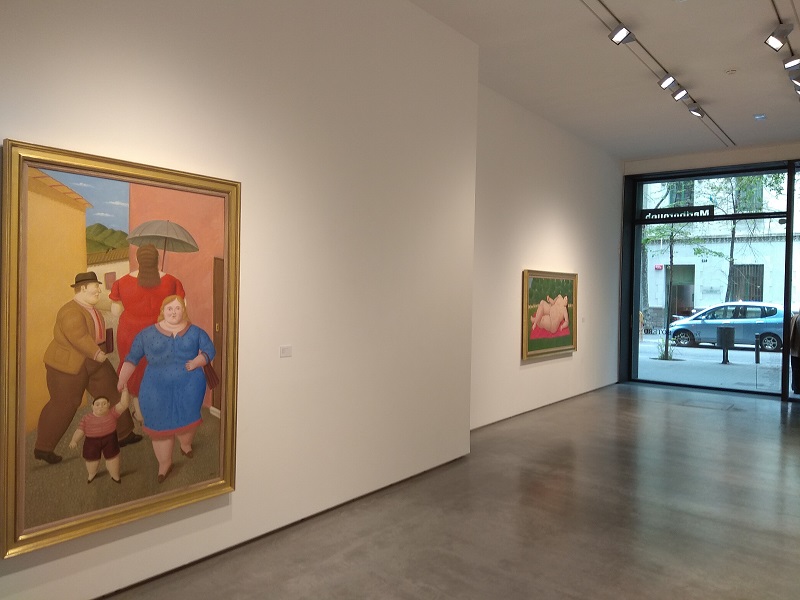
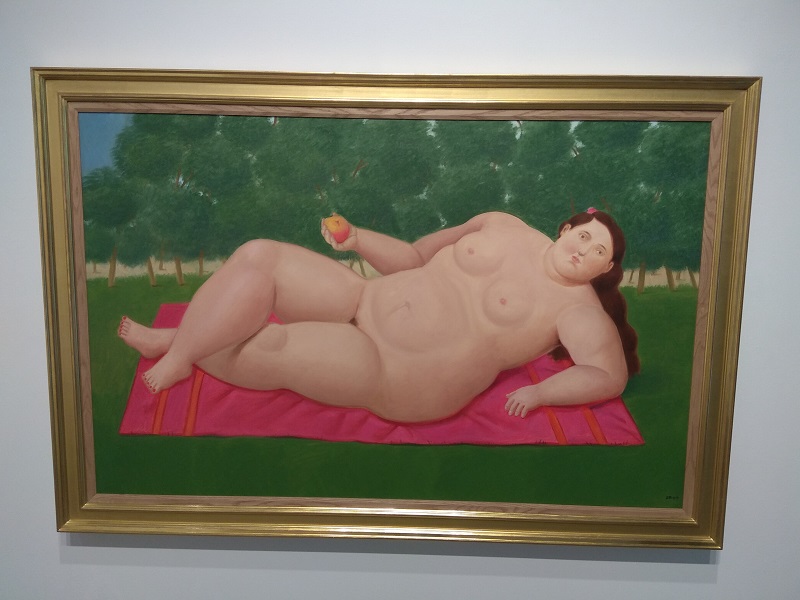
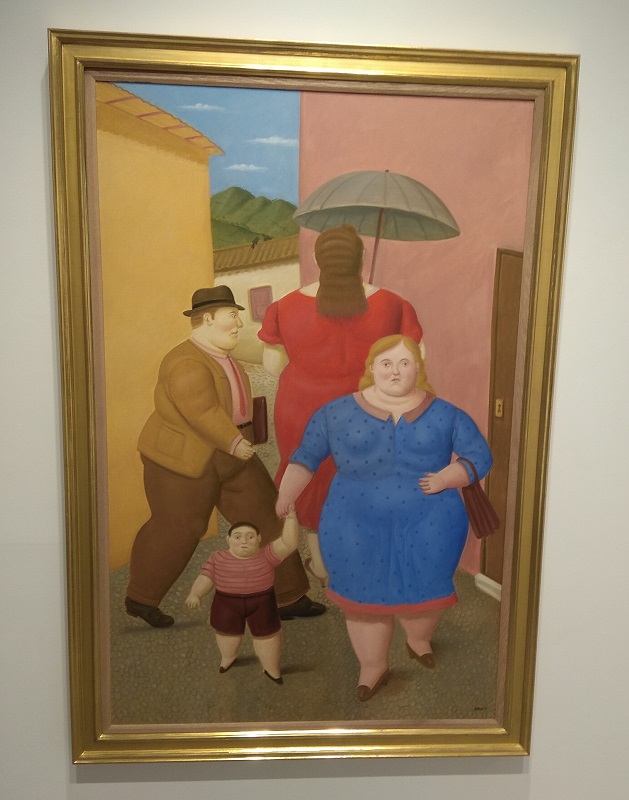
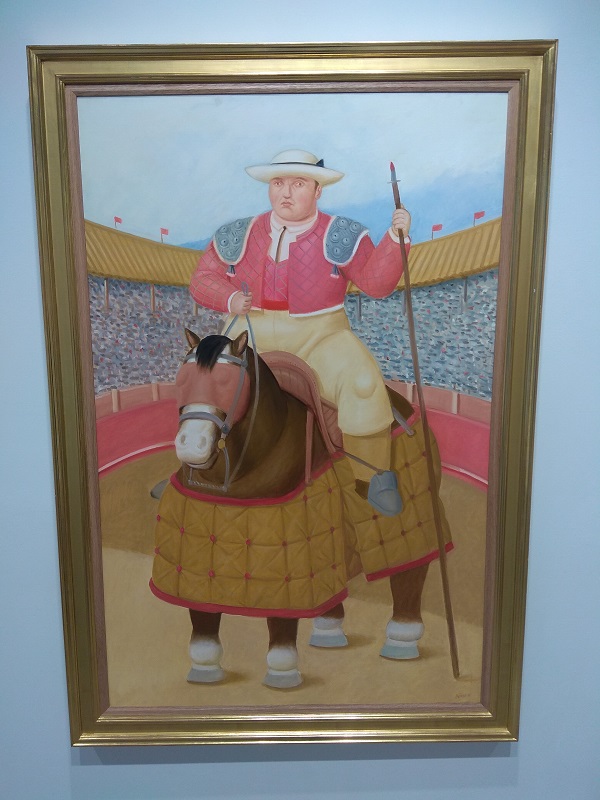
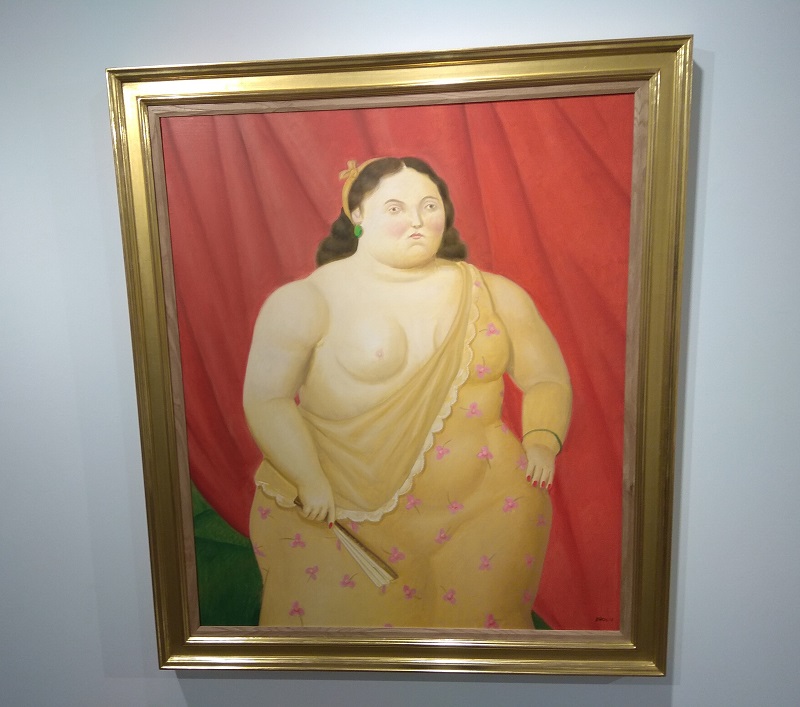
Related Publications

How Harumi Yamaguchi invented the modern woman in Japan
March 16, 2022
Giovanni Duarte and an orchestra capable of everything
August 26, 2020

